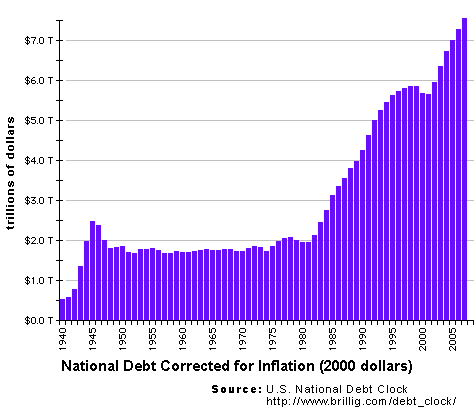1. Is their any plan in the making or in affect that will lower our debt?
THE DEBT CEILING - The deal would authorise an increase in the debt limit by at least $2.1tn. A senior administration official said that the level was enough to last until 2013, meaning it will not require action in 2012 - a presidential election year.
FIRST ROUND OF SPENDING CUTS - Immediately authorises spending cuts of more than $900bn to take place over the next decade. A White House official said the figure would be between $900bn and $1tn, while House Speaker John Boehner's office gave the figure of $917bn.
The White House said the cuts would be in the form of caps on discretionary spending - funding that is authorised at will by congress - and not from entitlements such as Social Security and the Medicare health programme for the elderly.
http://www.aljazeera.com/news/americas/2011/08/2011815169437290.html
2. At what rate is the debt increasing?
The Office of Management and Budget at the White House predicts the "Gross Federal Debt" for the next few years. At the end of the fiscal year 2005, (Sept. 30 2005) they list the debt at $8,031.4 billion. They predict it will be $676 billion higher at the end of the next fiscal year. That is the average rate of increase per year assumed by the clock.
http://www.federalbudget.com/
3. Is the U.S debt clock accurate?
Q: How accurate is your Debt Clock?
A: As accurate as I can make it! Every business day, the U.S. Treasury department releases new Debt figures for the previous day. I periodically get these figures and use them to adjust the Debt Clock's value so it remains accurate.I, or rather the CGI code I wrote for the Debt Clock, then calculate the current value of the Debt by a simple linear extrapolation between the recent date's value and the value for the debt about a year previously.I also get up to date population figures from the Census Department's Population Clock and use this to calculate each person's share of the total debt.
http://www.brillig.com/debt_clock/faq.html




